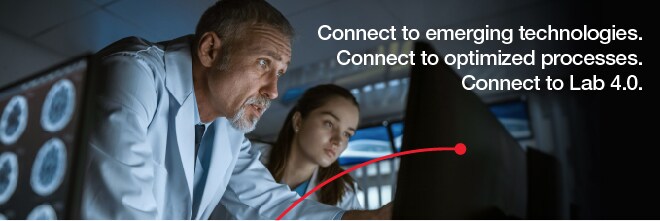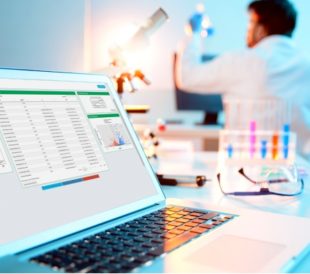Freeing scientists to do what they do best… science
People play a critical role in laboratory workflows, from sample preparation and extraction through to data analysis and results interpretation. However, due to poorly integrated systems and technologies, scientists often spend more time carrying out laborious, routine tasks than applying their knowledge and expertise to drive innovation. Frustratingly, the reality is that many of these processes could be automated to allow scientists more time to focus on the science.
Alongside our webinar on optimizing the human experience in the laboratory, here we look at how laboratory orchestration helps automate and integrate workflows to enhance quality, efficiency and ease of use.

Laboratory life is often laborious… but with laboratory orchestration it doesn’t have to be
Scientific workflows are complex processes involving multiple steps. Take next-generation sequencing, for example, which includes an extensive series of extraction, normalization, amplification, purification, sequencing and analysis steps. It is often the case that the technologies required, such as extraction equipment, thermal cyclers, centrifuges and sequencers, come from multiple suppliers with different user interfaces and supporting software.
While laboratory operations are more efficient and responsive thanks to enhancements in software over the past two decades, the dominance of distributed enterprise systems means data is often stored inconsistently in different databases. In some cases, data may require manual transcription from one system to another, taking valuable time and leaving information vulnerable to errors. As a result, planning and implementing laboratory work across software systems and instruments is often overly complicated and inefficient, with data entry and validation steps slowing the pace of innovation. Consequently, scientists typically find a large part of their role involves bridging disparate systems and workflows, which isn’t the best use of talent.
Laboratory orchestration: Creating a seamlessly connected laboratory ecosystem
Integration and automation offer enormous potential for laboratories to reduce manual processes, allowing scientists to eliminate tedious tasks and focus on the science. Advances in the flexibility and capabilities of automation platforms allow laboratories to increase speed, throughput and precision on an unprecedented scale. At the same time, improvements in digital systems and their integration into workflows support data integrity by eliminating the potential for transcription errors, while streamlining information retrieval and sharing.
Seamless laboratory connectivity is critical to remove barriers associated with using multiple vendor technologies and fragmented digital systems. To facilitate the free flow of information, forward-thinking scientific organizations focus on data transformation, using laboratory orchestration platforms to truly integrate workflows, data and systems. Laboratory orchestration platforms integrate the flow of tasks, personnel, inventory, consumables, instruments and experimental data, regardless of vendor, to streamline processes, and improve efficiency and quality. It is this powerful ability to bridge the gap between vendors that sets platform technologies apart from traditional laboratory information management system (LIMS) offerings.
Improving efficiency, data quality and user experience through digital transformation
Laboratory orchestration helps scientific organizations realize the full potential of digital transformation to improve quality, efficiency and the user experience. These platforms allow workflows and experiments to be automated from design to execution, enabling tasks, such as consumable resupply and instrument maintenance, to be scheduled automatically to maximize productivity and efficiency. By closely integrating people, information and technologies in a single ecosystem, laboratory orchestration allows teams to connect and automate the entire data pipeline. This enhances data findability, accessibility, interoperability and reusability (the so-called FAIR data principles) to ensure the integrity of information.
These advances in connectivity also allow laboratories to leverage scalability, helping organizations quickly extend capabilities and respond to changing needs. By seamlessly linking all aspects of laboratory workflows, orchestration platforms enable the use of data analytics and visualization to improve responsiveness and accelerate innovation. This helps organizations utilize their data to identify trends, predict potential issues and take advantage of emerging opportunities for continual process improvement. Ultimately, laboratory orchestration streamlines workflows, eliminating tedious manual tasks to enhance user experience, and enables scientists to focus on the advancement of science.
What could laboratory orchestration mean for your laboratory?
To see how laboratory orchestration could transform your workflows, watch the webinar.



Leave a Reply